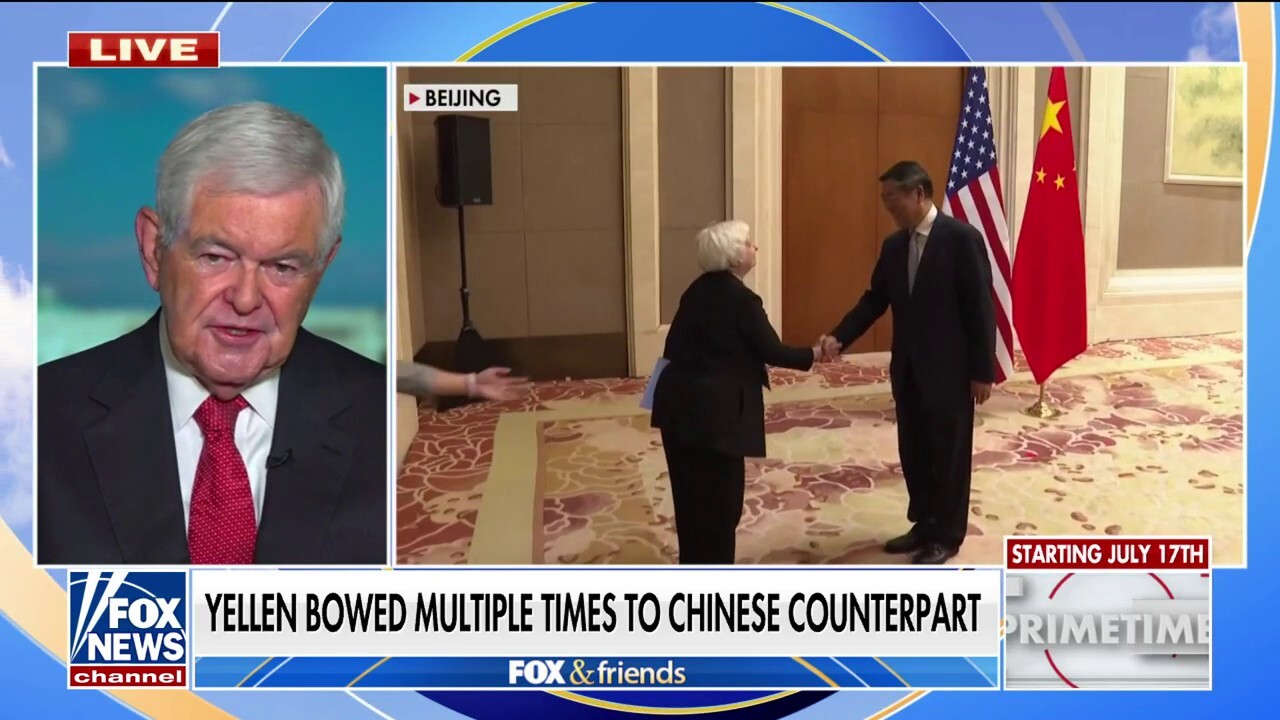Tariff Truce: Maintaining US-China Trade Across The Pacific

Table of Contents
Historical Context of US-China Trade Tensions
The Evolution of Trade Wars
The history of US-China trade relations is punctuated by periods of cooperation and conflict. The current tensions, however, represent a significant escalation in the long-running trade dispute. The evolution of this trade war can be traced through several key events:
- Early 2000s: Growing trade imbalances and concerns about China's trade practices begin to emerge.
- 2018: The Trump administration imposes significant tariffs on Chinese goods, citing unfair trade practices and intellectual property theft. China retaliates with its own tariffs.
- 2020: The "Phase One" trade deal is signed, offering a temporary reprieve from further tariff escalation.
This "trade war," marked by significant tariff escalation and retaliatory measures, had a profound impact on various industries in both countries. For example, the US agricultural sector faced significant losses due to Chinese retaliatory tariffs, while Chinese manufacturers struggled with increased costs and reduced access to the US market. Key players such as Robert Lighthizer (US Trade Representative) and Liu He (Chinese Vice Premier) played crucial roles in the negotiations, navigating the complex political and economic landscape.
The Current State of the Tariff Truce
Analyzing the “Phase One” Deal
The "Phase One" trade deal, signed in January 2020, represented a significant, albeit temporary, de-escalation in the US-China trade war. This bilateral trade agreement included commitments from China to increase purchases of US goods and services, address intellectual property concerns, and improve market access for US companies.
- Successes: The deal led to a temporary reduction in tariff increases and provided a framework for future negotiations.
- Shortcomings: China has fallen short of its purchase commitments in some areas, and significant challenges remain regarding intellectual property rights and other structural issues. Further negotiations are crucial to build upon the foundation laid by "Phase One."
The "Phase One Deal" offered a fragile tariff reduction, but the underlying tensions haven't disappeared. The progress towards reducing trade imbalances remains uneven and requires continuous effort and commitment from both sides.
Challenges to Maintaining the Tariff Truce
Geopolitical Factors
Broader geopolitical tensions significantly impact the US-China trade relationship. These factors create a complex environment that makes sustaining a tariff truce challenging.
- Technological Competition: Competition in areas like 5G technology and semiconductors fuels strategic rivalry and adds to trade tensions.
- Intellectual Property Rights: Concerns about intellectual property theft and forced technology transfer persist, hindering trust-building.
- Influence of Other Global Powers: Other global powers, such as the European Union, influence the dynamics of the relationship, creating both opportunities and complications for a trade truce.
Economic Factors
Economic vulnerabilities further complicate the maintenance of the tariff truce.
- Global Supply Chain Disruptions: The COVID-19 pandemic exposed vulnerabilities in global supply chains, highlighting the risks of over-reliance on a single trading partner.
- Inflationary Pressures: Tariffs contribute to inflationary pressures, impacting consumers and businesses in both countries.
- Domestic Political Pressures: Domestic political considerations in both the US and China can influence the willingness to compromise on trade issues.
The intertwined nature of geopolitical risks and economic uncertainty creates a formidable challenge to maintaining a lasting tariff truce.
Strategies for Sustaining a Peaceful Trade Relationship
Diplomatic Engagement and Negotiation
Continued diplomatic engagement and negotiation are vital to sustaining a peaceful trade relationship.
- Future Negotiation Areas: Focusing on addressing structural trade imbalances, strengthening intellectual property protections, and promoting fair competition are key areas for future negotiations.
- Role of International Organizations: International organizations like the World Trade Organization (WTO) can play a crucial role in mediating disputes and establishing a framework for fair trade practices.
- Building Trust and Transparency: Improving transparency and predictability in trade policies can foster trust and encourage cooperation.
Diversification of Trade Partners
Reducing reliance on a single major trading partner through diversification is crucial for mitigating risks.
- Benefits of Diversifying Supply Chains: Diversifying supply chains enhances resilience to disruptions and reduces dependence on any one nation.
- Alternative Trading Partners: Exploring trade relationships with other countries in Asia, Latin America, and Africa can provide alternative sources of goods and markets for exports.
- Economic Feasibility: The economic feasibility of diversification needs careful assessment, considering factors such as transportation costs, infrastructure, and regulatory hurdles.
Implementing these strategies requires a long-term commitment and collaborative efforts from both governments and the private sector.
Conclusion: Securing a Lasting Tariff Truce in US-China Relations
The challenges to maintaining a tariff truce between the US and China are significant, encompassing geopolitical tensions, economic vulnerabilities, and domestic political pressures. However, sustaining a peaceful trade relationship is paramount for global economic stability. Continued diplomatic engagement, a focus on addressing structural trade issues, and a strategy of diversifying trade partners are crucial for securing a lasting tariff truce. Staying informed about developments in US-China trade relations is critical. We encourage you to follow reputable sources and advocate for policies that promote peaceful trade solutions. Subscribe to our newsletter for updates on US-China trade negotiations and help build a future of stable and cooperative trade relations. Let's work together towards a lasting tariff truce and a more stable global economy.

Featured Posts
-
 Sanofi Rachete Un Anticorps A La Biotech Americaine Dren Bio
May 31, 2025
Sanofi Rachete Un Anticorps A La Biotech Americaine Dren Bio
May 31, 2025 -
 Dry And Sunny Tuesday Forecast For Northeast Ohio
May 31, 2025
Dry And Sunny Tuesday Forecast For Northeast Ohio
May 31, 2025 -
 Entrepreneurs Dragons Den Appearance Leads To 40 Profit Rise
May 31, 2025
Entrepreneurs Dragons Den Appearance Leads To 40 Profit Rise
May 31, 2025 -
 Seattle Rain Weekend Weather Update
May 31, 2025
Seattle Rain Weekend Weather Update
May 31, 2025 -
 The Good Life Finding Purpose And Meaning In Your Daily Life
May 31, 2025
The Good Life Finding Purpose And Meaning In Your Daily Life
May 31, 2025
